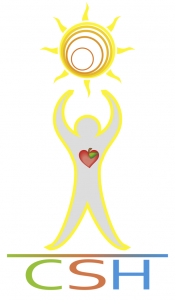Contributed by Katie Driscoll & Sami Hartwig (Teacher Candidates)
KidActive is a program that enables schools boards, schools and communities to embrace physical activity and natural play. As students in the BED program, we are excited to go back to the basics of play and learning and show our future students how to enjoy play using the natural spaces we have around us. Technology is growing and influencing our everyday lives and it’s being utilized in the classroom for the better. But sometimes we need to learn and play without devices. This program allows the students to drop the screen time and just enjoy the natural spaces around them. Kids just need to be kids and run around outside and play.
Health and physical activity are an important aspect of well-being. It’s important for students to get physical activity to promote increased blood flow for increased health. Better health will increase children’s ability to learn inside the classrooms and promote mental health and physical activity.
Building a healthy school environment is what KidActive is all about. Their programs are developed and co-inside with the pillars of comprehensive school health as well as the foundations for a healthy school. In terms of the pillars of comprehensive school health, KidActive relates to all of the pillars. It touches upon The Social and Physical Environments because it certainly makes use of the buildings, grounds, play space and equipment in the school. The goal of KidActive is, as mentioned before, to show students how to use the space around them and have fun without technology. KidActive touches upon The Teaching and Learning Pillar because it shows students activities related specifically to their curriculum where they are able to build skills and knowledge that will ultimately benefit them in the long run. The Partnerships and Service Pillar is touched upon as well because when a school decides to work with KidActive they are creating a relationship between a school and a community organization. Many stakeholders are also involved in the program which increases community relationships further and helps the community see more positive impacts. Teachers may also suggest the organization to another teacher or school which would support relationships within schools and between schools. Integration into the community encourages growth for using and obtaining green spaces for children to play outdoors. Lastly, KidActive follows The Healthy School Policy Pillar because it promotes and follows guidelines set out by schools and they aim to promote health and well-being within the school environment.
When it comes to The Foundations for a Healthy School, there are three foundations that are almost exactly the same as some of the Pillars of Comprehensive School Health. These include: Social and Physical Environments; Home, School and Community Partnerships; as well as Curriculum Teaching and Learning. These foundations are linked to KidActive for the same reasons they are related to the pillars of comprehensive school health. However, there are also two other foundations that KidActive relates to. The first is School and Classroom Leadership. KidActive helps promote this because it teaches students and teachers to have a common shared goal which is to increase active play and engage in a healthy lifestyle. This also allows the schools and students to become leaders of healthy living. Once they are introduced to new ways to promote healthy living they will become leaders and share their knowledge with their classmates and coworkers. Lastly, Student Engagement is the other foundation that KidActive helps promote. Students are the point of focus and they are the ones who get into the activities and end up being able to take the most away from the activities and learn to create their own activities and use their imaginations and their knowledge as to what is healthy. The students become active learners and are able to contribute to their own learning.
We think it’s important for students to utilize their outdoor play time not only during gym or DPA, but also during recess/nutritional breaks. Teaching children how to utilize their outdoor space during this program will encourage fun and active outdoor games/activities. They can use these games at home and teach it to their families to play outside with siblings and friends.
